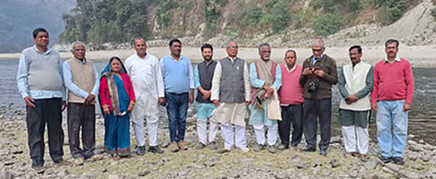Community Based Disaster Management (CBDM)
Objectives
The project’s objective was to improve the community preparedness to respond to natural disasters by
- Improving the institutional and technical capacity of priority districts on disaster risk reduction (DRR) and management;
- Enhancing the capacity of target communes for DRR;
- Implementing community based DRR
- Effective project management and dissemination of best practices and innovative approaches.
Outcomes of The Project
Community-Based Disaster Management (CBDM) focuses on engaging and empowering local communities to identify, assess, and manage their own disaster risks. The outcomes of CBDM can be significant and wide-ranging. Here are some key outcomes:
Increased Community Awareness and Preparedness:
- Communities gain a better understanding of local hazards and vulnerabilities.
- Enhanced capacity to prepare for, respond to, and recover from disasters.
Enhanced Resilience:
- Communities become more resilient by building social networks and support systems.
- Improved infrastructure and practices reduce the impact of future disasters.
Empowerment and Participation:
- Community members, including marginalized groups, participate in decision-making processes.
- Local knowledge and resources are utilized, fostering a sense of ownership and accountability.
Improved Risk Assessment and Planning:
- Community-led risk assessments identify specific local risks and needs.
- Development of community-specific disaster risk management plans.
Stronger Local Governance:
- Strengthened collaboration between communities and local authorities.
- Improved policies and regulations tailored to local contexts.
Sustainable Development:
- Integration of disaster risk reduction into development planning and activities.
- Promotion of sustainable practices that enhance environmental and economic resilience.
Capacity Building and Skill Development:
- Training and capacity-building programs improve local skills in disaster management.
- Development of local leadership and volunteer networks.
Resource Mobilization:
- Communities are better equipped to mobilize resources and access external support.
- Creation of community funds or resource pools for disaster risk reduction activities.
Reduction in Losses and Damages:
- Decreased loss of life and property during disasters.
- Reduced economic impact and faster recovery times.
Social Cohesion and Trust:
- Strengthened community bonds and trust among members.
- Increased collaboration and mutual support in times of crisis.

- Introduction
Community-Based Disaster Management (CBDM) is an approach that encourages communities toparticipate in disaster preparedness, response, and recovery actively. It utilizes local knowledge, resources, and abilities to reduce vulnerabilities and enhance resilience against disasters. In case of Uttar Pradesh being one of India's most populous and disaster-prone state, the implementation of CBDM was crucial.
- Program Description
Community-Based Disaster Management Training projects were carried out in two phases. In phase 1 over 950 Gram Panchayat of 19 districts and in phase 2 over 2800 Gram Panchayat of 56districts of Uttar Pradesh. Therefore, total 75 districts were covered with 50 gram panchayats from each districts i.e.; 3750 gram panchayats have been covered.
 Government of Uttar Pradesh
Government of Uttar Pradesh